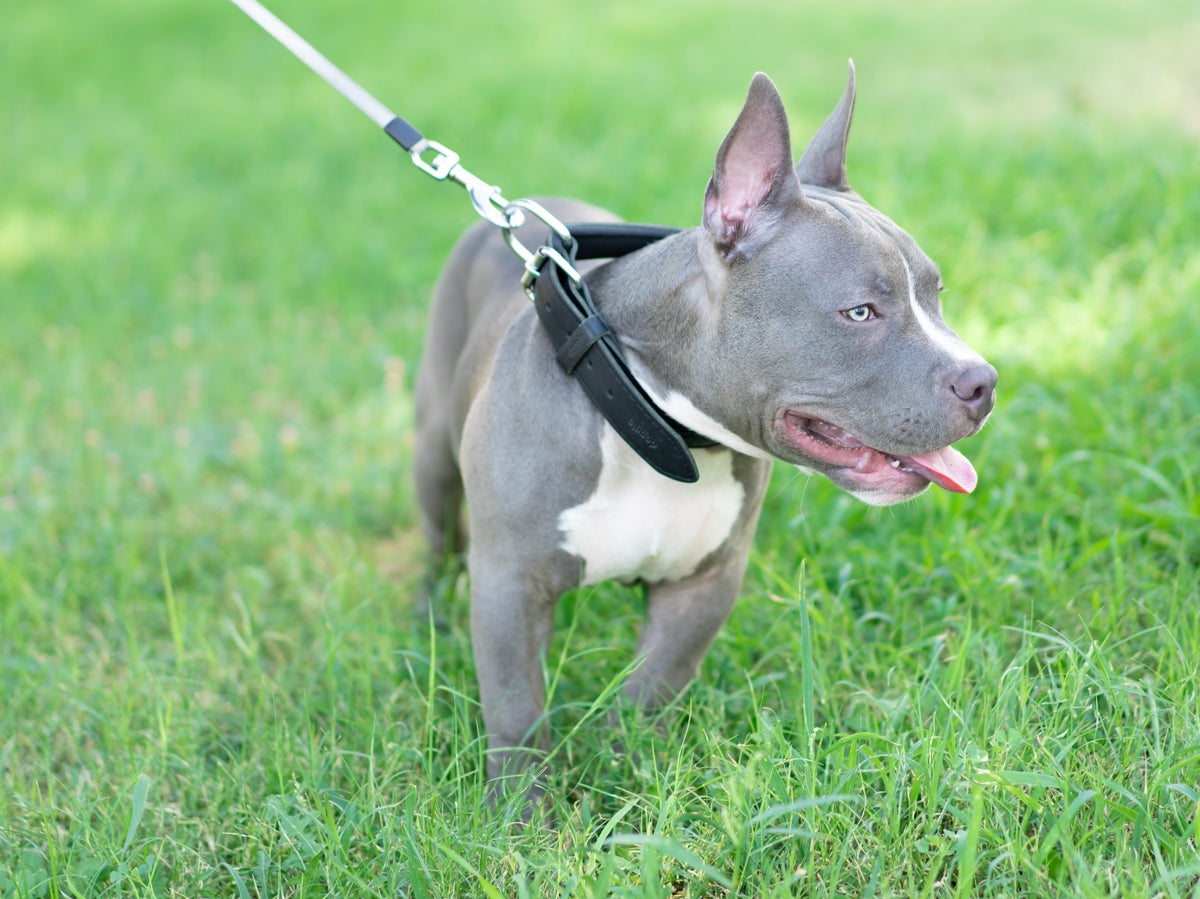
The mother of a 10-year-old boy who was killed by an American XL Bully dog is calling for a change to the law to protect the public from out-of-control pets.
Emma Whitfield, 32, lost her son, Jack Lis, after he was attacked in Pentwyn, near Cardiff, South Wales, in November 2021, and since then a further 15 people in Britain have died of injuries sustained from maulings by aggressive and untrained dogs.
Earlier this month, Jonathan Hogg, 37, was killed in Leigh, Greater Manchester, by an animal of the same breed.
A police investigation into Hogg’s death led to the dog being destroyed, as well as two arrests and the seizure of 15 more, six of them adults and nine puppies.
Detective chief inspector John Davies of Greater Manchester Police said: “Dangerous dogs do not have a place in our communities, and we want to reassure the public that we are doing everything in our power to keep people safe.
“If you think someone has or is breeding dogs which endanger the public, please report it online or by calling 101.”
Recalling her own ordeal, Ms Whitfield told Metro: “I still have terrible flashbacks. I still see the animal and its teeth. I hear the barking,”
“You relive it multiple times a day – it’s torture. I still find it unbelievable. Sat on the sofa or on the way home, it hits you all over again.”
Ms Whitfield’s campaign, the Jack Lis Law, is seeking new legislation to regulate the breeding, training and sale of dogs and is being supported by the Dog Control Coalition, which includes the RSPCA, the Dogs Trust and Battersea Dogs & Cats Home, among others.
The existing Dangerous Dog Act 1991 prohibits the ownership of certain types of fighting dogs in the interest of protecting the public but has been widely criticised as unsatisfactory since its implementation.
Introduced by then-home secretary Kenneth Baker in 1991 after a spate of 11 fatal dog attacks made headlines, Section 1 of the Act outlaws certain dogs bred for fighting (naming the pitbull terrier, Japanese tosa, fila Brasiliero and the dogo Argentino but, crucially, not American bulldogs). Section 2 makes it a criminal offence for the owner to fail to control an aggressive dog in their care in public and Section 3 outlines the rules surrounding destruction orders.
The legislation has been critiqued for addressing only the physical harm done to humans, not to other animals or the mental distress likely to result from a dog attack.

Organisations such as the UK Kennel Club, Royal Society for the Prevention of Cruelty to Animals and the British Veterinary Association have all argued that it is not scientific to tar an entire breed as dangerous and that ownership and environment play a huge role in a dog’s development.
The former states on its website: “The law on dangerous dogs refers to specific breeds of dog as ‘dangerous’. However, we believe that breed-specific legislation ignores the most important factors that contribute to biting incidents – primarily anti-social behaviour by irresponsible dog owners who train their dogs to be aggressive or do not train their dogs adequately.
“The Dangerous Dogs Act 1991 has proven that demonising certain breeds makes them more attractive to people who want to flout the law and use dogs in this way.
“The problem of dangerous dogs is a social one and needs to be tackled through the enforcement of effective legislation that seeks to curb irresponsible owners of all types of dog and better educate the dog-owning public to prevent incidents before they occur.”
The reason American Bullies – an American version of the pitbull terrier crossed with American, English and Olde English bulldogs – were not included in the act is that they were barely known at the time of its drafting, emerging since the 1980s as a popular “status” dog, their sudden bursts of aggression prized in certain quarters.
“I see people with them all the time: they are usually owned by young men,” expert handler Colin Tennant recently told The Times.
“These big, muscular, thuggish dogs are an extension of the male ego. For the owner, the scarier the dog, the better. Dogs are just another weapon – like a knife. There’s a huge market for them.”
For many, it is the culture surrounding the ownership of aggressive dogs such as American Bullies that needs addressing, not the animals themselves, who require only proper socialising and training as puppies to prevent their violent instincts from becoming a problem in adolescence.







